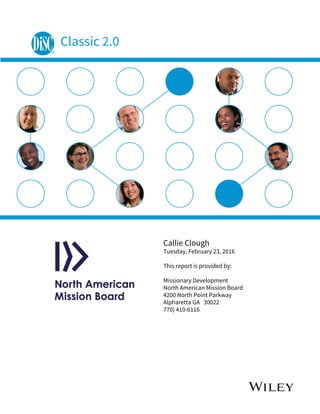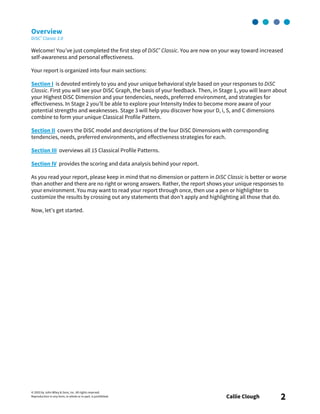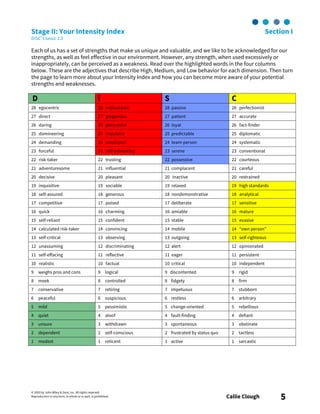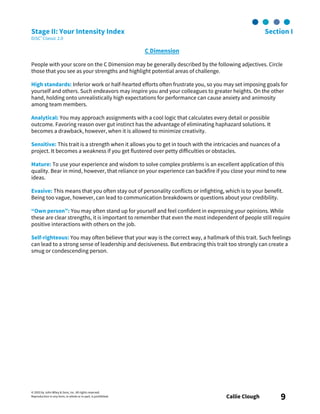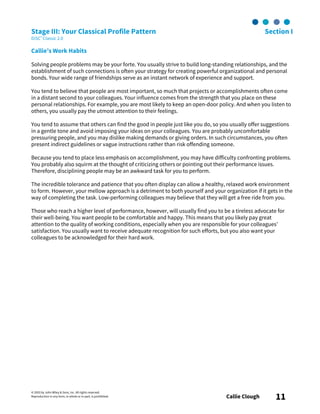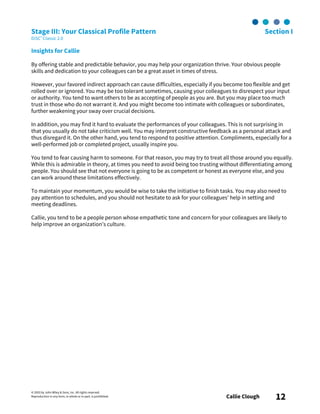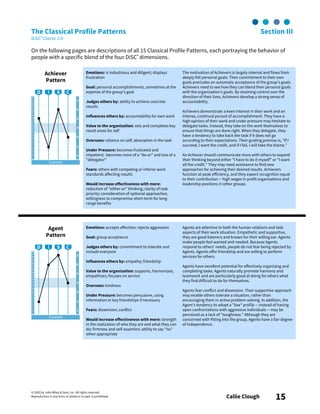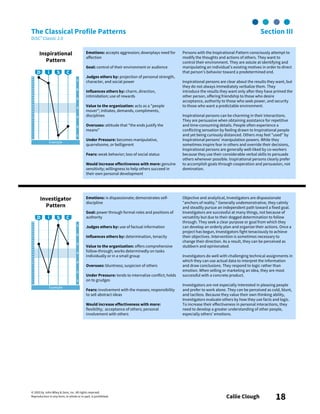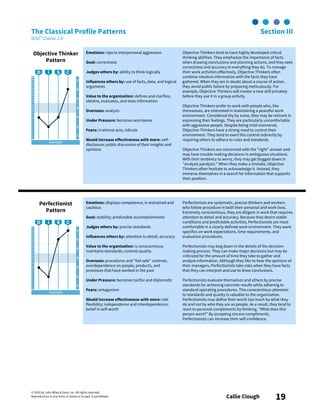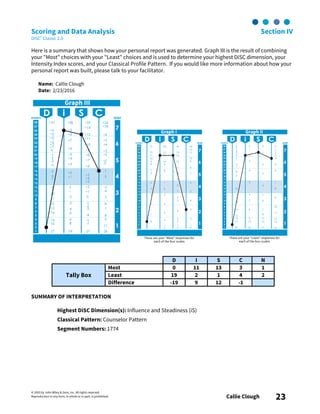This document provides a report on Callie Clough's DiSC Classic 2.0 assessment. The report is organized into four sections. Section I focuses on Callie's individual behavioral style, which is high in both Influence and Steadiness dimensions. It also explores her potential strengths and weaknesses through her Intensity Index. Section II covers the overall DiSC model. Section III overviews the 15 Classical Profile Patterns, and Section IV discusses the scoring and data analysis behind the report. The goal is to increase Callie's self-awareness and effectiveness.
